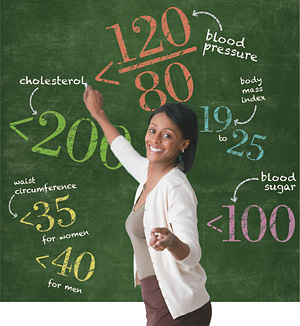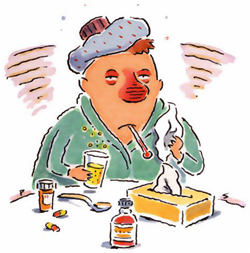 Manufacturers have begun shipping flu vaccines for the 2013-2014 U.S. season. Between 135 million and 139 million doses of vaccine are being produced. While some vaccine will be available in August, ample supplies should be available by September and October. Everyone 6 months of age and older should get their yearly flu vaccine, ideally by October.
Manufacturers have begun shipping flu vaccines for the 2013-2014 U.S. season. Between 135 million and 139 million doses of vaccine are being produced. While some vaccine will be available in August, ample supplies should be available by September and October. Everyone 6 months of age and older should get their yearly flu vaccine, ideally by October.
Tag: health
Benefits of exercise – reduces stress, anxiety, and helps fight depression
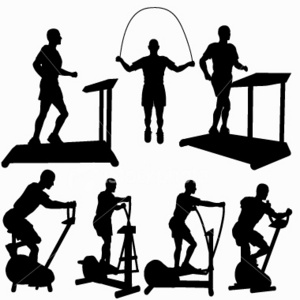 Regular aerobic exercise can bring remarkable changes not just to your body, your metabolism, and your heart, but also to your spirits.
Regular aerobic exercise can bring remarkable changes not just to your body, your metabolism, and your heart, but also to your spirits.
Aerobic exercise is the key for your head, just as it is for your heart. It has a unique capacity to exhilarate and relax, to provide stimulation and calm, to counter depression and dissipate stress. Endurance athletes commonly experience the restorative power of exercise, and this has been verified in clinical trials that have used exercise to treat anxiety and depression.
How can exercise contend with problems as difficult as anxiety and depression? There are several explanations, some chemical, others behavioral. The mental benefits of aerobic exercise have a neurochemical basis. Exercise reduces levels of the body’s stress hormones, such as adrenaline and cortisol. It also stimulates the production of endorphins, the body’s natural painkillers and mood elevators.
Behavioral factors contribute to the emotional benefits of exercise. As your waistline shrinks and your strength and stamina increase, your self-image will improve. You’ll earn a sense of pride and self-confidence. Your renewed vigor will help you succeed in many tasks, and the discipline will help you achieve other lifestyle goals. Exercise and sports also provide opportunities to enjoy some solitude or to make friends and build networks.
Harvard Men’s Health Watch notes that you should exercise nearly every day. That doesn’t necessarily mean hitting the gym. But it does mean at least 30 minutes of moderate activity. And if you need more help with stress, consider autoregulation exercises involving deep breathing or muscle relaxation.
Develop a Drug-free Workplace
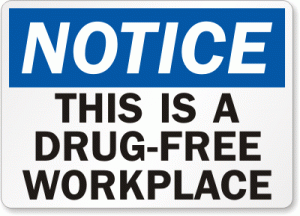 In a drug-free workplace, the employer has taken steps and initiated policies to ensure that employees, vendors, and customers are not:
In a drug-free workplace, the employer has taken steps and initiated policies to ensure that employees, vendors, and customers are not:
- taking or using alcohol or drugs,
- selling drugs, or
- affected by the after effects of indulging in alcohol or drugs outside of the workplace during non-work time.
Additionally, the goal of a drug-free workplace program, as they have traditionally been developed, is to encourage an employee with a substance abuse problem to seek treatment, recover, and return to work.
via Develop a Drug-free Workplace – Drug Testing in the Workplace.
Tip for a Safe and Healthy Life
Job Stress and Health
 Stress sets off an alarm in the brain, which responds by preparing the body for defensive action. The nervous system is aroused and hormones are released to sharpen the senses, quicken the pulse, deepen respiration, and tense the muscles. This response (sometimes called the fight or flight response) is important because it helps us defend against threatening situations. The response is preprogrammed biologically. Everyone responds in much the same way, regardless of whether the stressful situation is at work or home.
Stress sets off an alarm in the brain, which responds by preparing the body for defensive action. The nervous system is aroused and hormones are released to sharpen the senses, quicken the pulse, deepen respiration, and tense the muscles. This response (sometimes called the fight or flight response) is important because it helps us defend against threatening situations. The response is preprogrammed biologically. Everyone responds in much the same way, regardless of whether the stressful situation is at work or home.
Short-lived or infrequent episodes of stress pose little risk. But when stressful situations go unresolved, the body is kept in a constant state of activation, which increases the rate of wear and tear to biological systems. Ultimately, fatigue or damage results, and the ability of the body to repair and defend itself can become seriously compromised. As a result, the risk of injury or disease escalates.
In the past 20 years, many studies have looked at the relationship between job stress and a variety of ailments. Mood and sleep disturbances, upset stomach and headache, and disturbed relationships with family and friends are examples of stress-related problems that are quick to develop and are commonly seen in these studies. These early signs of job stress are usually easy to recognize. But the effects of job stress on chronic diseases are more difficult to see because chronic diseases take a long time to develop and can be influenced by many factors other than stress. Nonetheless, evidence is rapidly accumulating to suggest that stress plays an important role in several types of chronic health problems-especially cardiovascular disease, musculoskeletal disorders, and psychological disorders.
Health care expenditures are nearly 50% greater for workers who report high levels of stress.
-Journal of Occupational and Environmental Medicine
via CDC – NIOSH Publications and Products – STRESS…At Work (99-101).
What is MRSA infection?
 Methicillin-resistant Staphylococcus aureus (MRSA) infection is caused by a strain of staph bacteria that’s become resistant to the antibiotics commonly used to treat ordinary staph infections.
Methicillin-resistant Staphylococcus aureus (MRSA) infection is caused by a strain of staph bacteria that’s become resistant to the antibiotics commonly used to treat ordinary staph infections.
Most MRSA infections occur in people who’ve been in hospitals or other health care settings, such as nursing homes and dialysis centers. When it occurs in these settings, it’s known as health care-associated MRSA (HA-MRSA). HA-MRSA infections typically are associated with invasive procedures or devices, such as surgeries, intravenous tubing or artificial joints.
Another type of MRSA infection has occurred in the wider community — among healthy people. This form, community-associated MRSA (CA-MRSA), often begins as a painful skin boil. It’s spread by skin-to-skin contact. At-risk populations include groups such as high school wrestlers, child care workers and people who live in crowded conditions.
via MRSA infection – Diagnosis and Treatment Options at Mayo Clinic.
Protect Your Health – Know Your Numbers
What is Sudden Cardiac Arrest
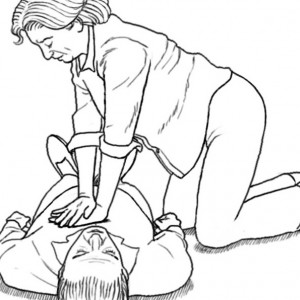 Sudden cardiac arrest is the sudden, unexpected loss of heart function, breathing and consciousness. Sudden cardiac arrest usually results from an electrical disturbance in your heart that disrupts its pumping action, stopping blood flow to the rest of your body.
Sudden cardiac arrest is the sudden, unexpected loss of heart function, breathing and consciousness. Sudden cardiac arrest usually results from an electrical disturbance in your heart that disrupts its pumping action, stopping blood flow to the rest of your body.
Sudden cardiac arrest is different from a heart attack, which occurs when blood flow to a portion of the heart is blocked. However, a heart attack can sometimes trigger an electrical disturbance that leads to sudden cardiac arrest.
Sudden cardiac arrest is a medical emergency. If not treated immediately, it causes sudden cardiac death. With fast, appropriate medical care, survival is possible. Administering cardiopulmonary resuscitation (CPR) — or even just compressions to the chest — can improve the chances of survival until emergency personnel arrive.
Key to Healthy Aging
 People in the U.S. are living longer than ever before. Many seniors live active and healthy lives. But there’s no getting around one thing: as we age, our bodies and minds change. There are things you can do to stay healthy and active as you age:
People in the U.S. are living longer than ever before. Many seniors live active and healthy lives. But there’s no getting around one thing: as we age, our bodies and minds change. There are things you can do to stay healthy and active as you age:
- Eat a balanced diet
- Keep your mind and body active
- Don’t smoke
- Get regular checkups
- Practice safety habits
Cardiac Rehab Crucial for Women
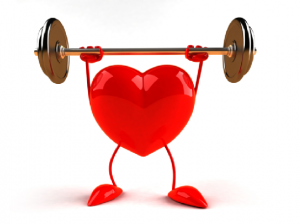 A new Canadian study says women with coronary artery disease (CAD) who complete a 12-week rehabilitation program are two-thirds less likely to die than those not referred to a program. Even more interesting, women with CAD who complete rehabilitation programs reduce their chances of dying early significantly more than men with CAD who complete the same 12-week program.
A new Canadian study says women with coronary artery disease (CAD) who complete a 12-week rehabilitation program are two-thirds less likely to die than those not referred to a program. Even more interesting, women with CAD who complete rehabilitation programs reduce their chances of dying early significantly more than men with CAD who complete the same 12-week program.
via Cardiac Rehab Crucial for Women with Coronary Artery Disease » UC Health Women’s Center.


